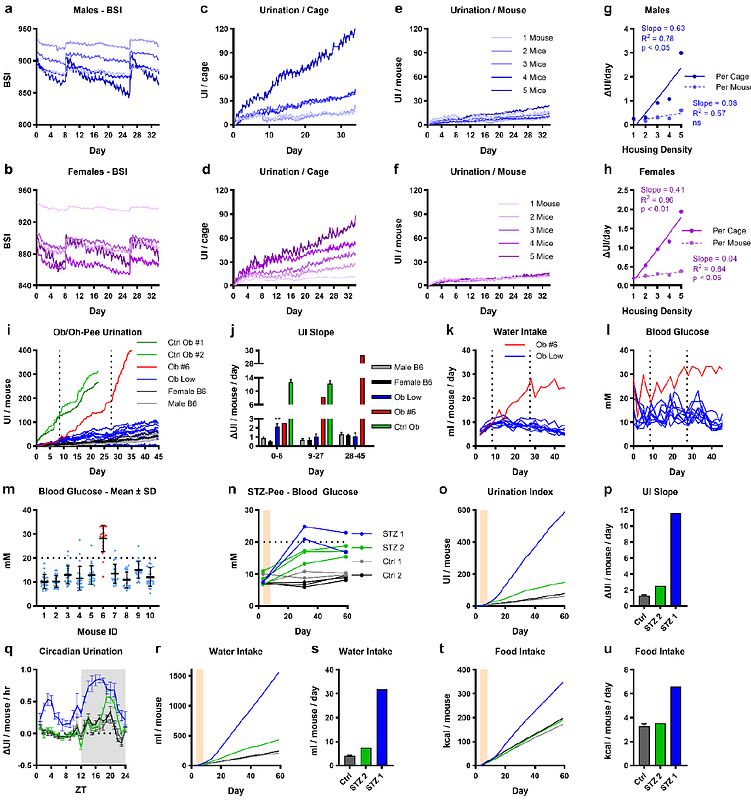Robust non-invasive detection of hyperglycemia in mouse models of metabolic dysregulation: the novel Urination Index biomarker

Robust non-invasive detection of hyperglycemia in mouse models of metabolic dysregulation: the novel Urination Index biomarker
Brachs, S.; Dall, M.; Zimbalski, L.-K.; Santin, Y.; Oeing, C.; Mai, K.; Parini, A.; Gaburro, S.; Nielsen, T. S.
AbstractBlood glucose is one of the most essential parameters in metabolic research. Yet, accurate blood glucose monitoring in mouse models of diabetes is challenging due to the significant stress associated with the measurements and the variability in diabetes development among experimental mouse models. This variability necessitates frequent blood glucose measurements, which only provide intermittent data and may not accurately reflect continuous metabolic changes. To address these issues, we have utilized the Tecniplast DVC system to monitor bedding moisture, enabling the detection of increased urination (polyuria), a primary symptom of diabetes. Polyuria is a hallmark of (undiagnosed/untreated) diabetes, and we revealed high correlations between bedding moisture and blood glucose during hyperglycemia. Thus, our developed algorithm enhances animal welfare by reducing the need for invasive blood glucose tests and enabling non-invasive, continuous assessment of hyperglycemia onset, progression, and severity directly within the mice\'s home cage. Continuous monitoring of polyuria allows detailed analysis of temporal and circadian urination patterns and enables assessment of the efficacy of glucose-lowering interventions, which is crucial in developing new pharmacological treatments. We propose that this innovative approach of a novel digital biomarker, the Urination Index (UI), offers a significant advance in the methodology for diabetes research in mouse models, improves animal welfare by reducing the need for invasive blood glucose tests, and enhances the reliability of data and the quality of life for the animals involved.